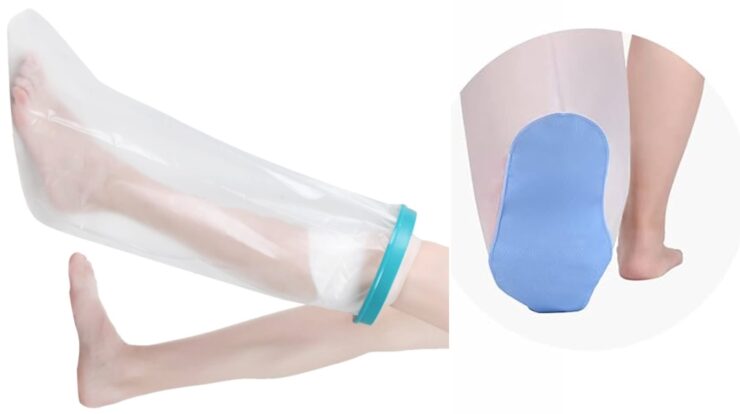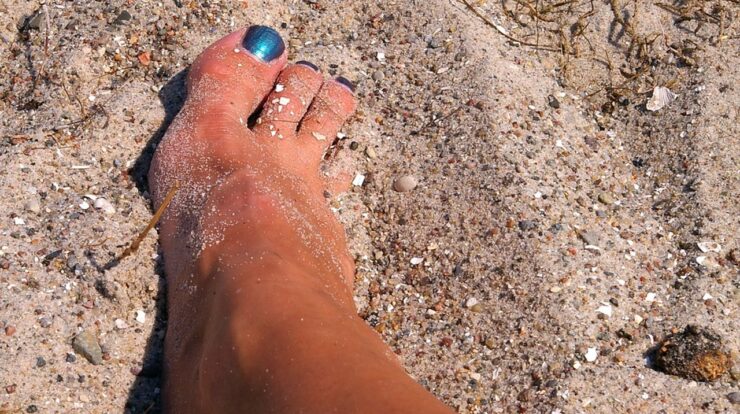
If you experience an ankle joint sprain or injury, your doctor may provide you with an ankle cast or boot walker to help protect your damaged joints as well as keep your ankle or foot protected.
An ankle cast boot is sometimes called a control ankle movement boot or CAM boot. A controlled ankle motion walking boot is used to immobilising the ankle during injuries such as severe sprains, fractures, tendon or ligament tears in the foot or ankle.
The boot securely holds the ankle in place for the injury to heal properly. After the injury, your foot will sometimes become swollen causing the cast to be very tight and you may want to loosen it but how loose should a cast be.
How Loose Should A Cast Be?
Your cast may feel quite snug, especially within the first few days after the injury. However, the cast can later become too loose after the initial swelling subsides. Being able to place one or two fingers under a cast is appropriate. You should never remove the cast or significantly move the affected limb under the cast.
What happens if a cast is too tight?
Usually, the tightness is as a result of foot swelling, which is normal and is the first step of the bone or tendon healing process. A cast that is too tight may decrease circulation to the affected limb. Poor circulation may damage the underlying skin, and/or injure the nerves in the foot. Nerve damage is not a good thing. You have to be mindful of it.
What are the most common symptoms of a cast is too tight?
There are a number of signs that you can look out for to help you identify the early stages of nerve damage. The most common symptoms of a cast that is too tight are listed below:
- You may have a feeling of numbness, tingling, or increased pain in the affected leg.
- The toes of the affected limb may display or show a different color to that of the skin of the non‐injured foot. (The skin may appear pale or blue.)
- Your foot may develop new swelling around the injured area (of the foot or toes).
If you notice any of these signs then it is time to take action. You should speak to your doctor and follow the instruction given for foot care while in a cast or while using a walking boot.
How long does it normally take for the swelling to subside after a broken foot?
After injury or surgery of the affected limb, swelling is typically expected in the first 24‐72 hours and may lead to the cast or walking boot feeling tight.
The tightness will go away after 72 hours. If it lasts longer you may need to seek further advice from your doctor. If the swelling lasts you long you may risk damage to the nerves in the leg.
What to do when the cast feel really tight?
When your cast feels really tight there are a number of steps that the doctors normally suggest that you follow. The first of which is that the doctors normally stated that the best way to treat the swelling is to elevate the legs.
The elevation of the leg is quite simply, it is raising the leg above the level of the heart. You can do this by packing pillows under the leg to secure it in place while you lie on the bed. For a much simpler solution, you can use the leg elevation pillow. These are sold on Amazon for cheap. You can probably have a look at the Milliard Foam Leg Elevator Cushion with Washable Cover for broken leg cushion.
The second thing that you can do is ice the section where the injury is through the cast. You can place an ice pack next to the location on the injury. Be mindful not to get the inside of the cast wet. If you have fibreglass cast this method is perfect because fibreglass is waterproof but remember that the padding inside the cast is not. This reusable ice bag can work well.
For a cheaper alternative, you can wrap ice in a thin cloth and rest it against the cast. The cool will transfer through the cast to your leg and cause the swelling to subside.
If you are wearing your walking boot you may be instructed to NOT to take off the boot. You doctor may instruct you to release some of the air or increase the air pressure as the swelling increases or subsides. If you are wearing a cast then obviously you cannot loosen the cast.
Remember: Elevation of the leg should be above the level of the heart to reduce the pressure on the foot. You can use the leg elevation pillow to securely elevate the leg. The swelling should be down after the first 72 hours.
What should you do to stop the swelling?
Prop up the injured leg so that it’s higher than your heart. If the cast is on your leg, lie down and put cushions or pillows underneath. This helps drain blood and fluids away from the injured area.
Chill the cast from the outside with a plastic bag of ice, or an ice pack wrapped in a thin towel. Keep the ice on the cast at the site of the injury for 15-30 minutes.
Repeat every few hours for the first few days. Be sure to keep the cast dry.
What to do if you feel sore or swollen and feeling pain?
If the swelling that case the cast to be tight does not go down ask your doctor for an alternative method to ease the swelling.
Again, if you feel sore or swollen, ask your doctors if you should take over-the-counter pain meds like acetaminophen or ibuprofen. These medication works effectively to get the swelling down.
Conclusion
Thank for reading the article on How Loose Should A Cast Be. Remember the information in this article is not medical advice. You should ALWAYS listen to your doctor and follow their instructions closely.
Reference
https://www.webmd.com/first-aid/firstaid-care-for-cast#1






